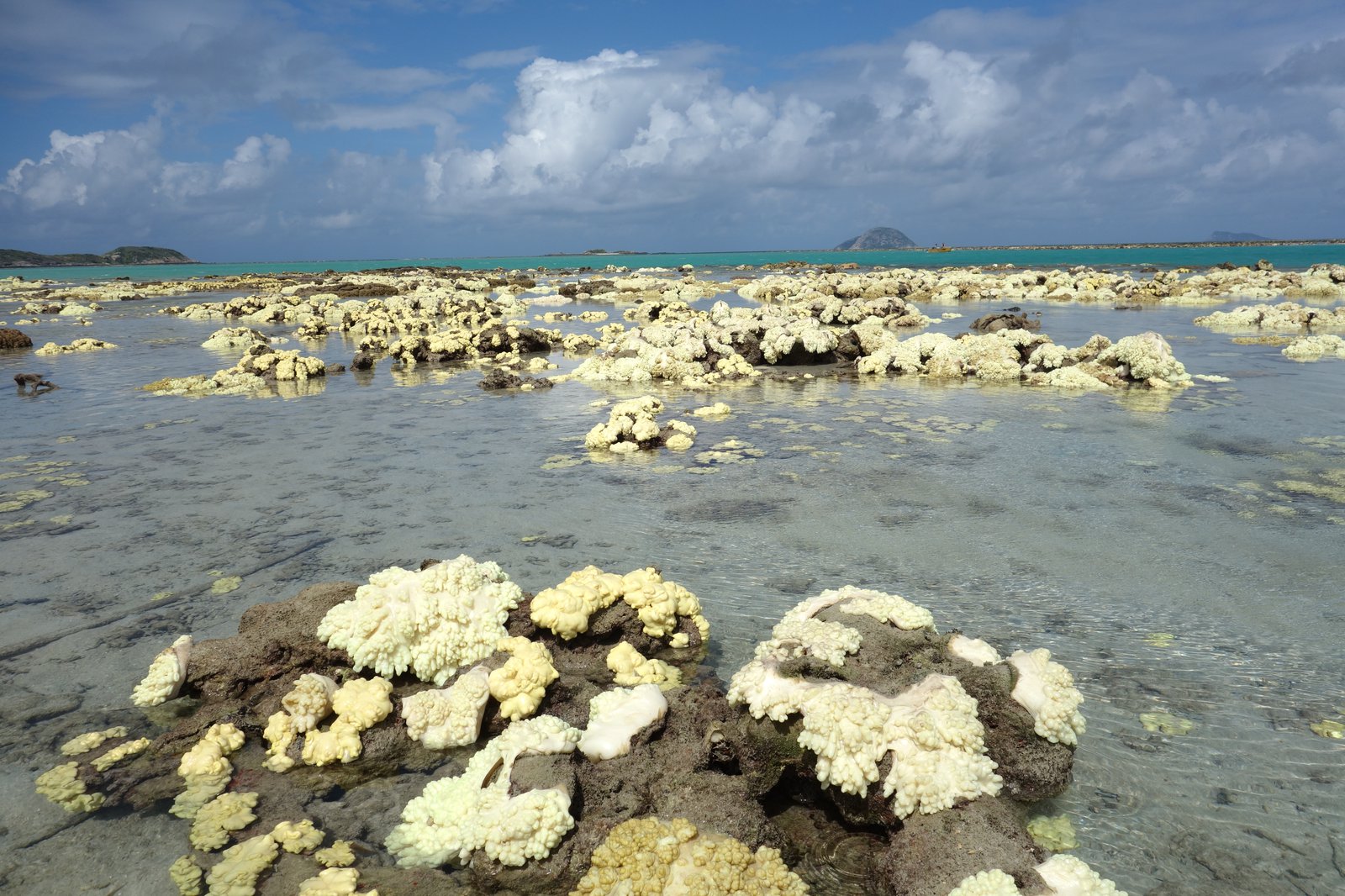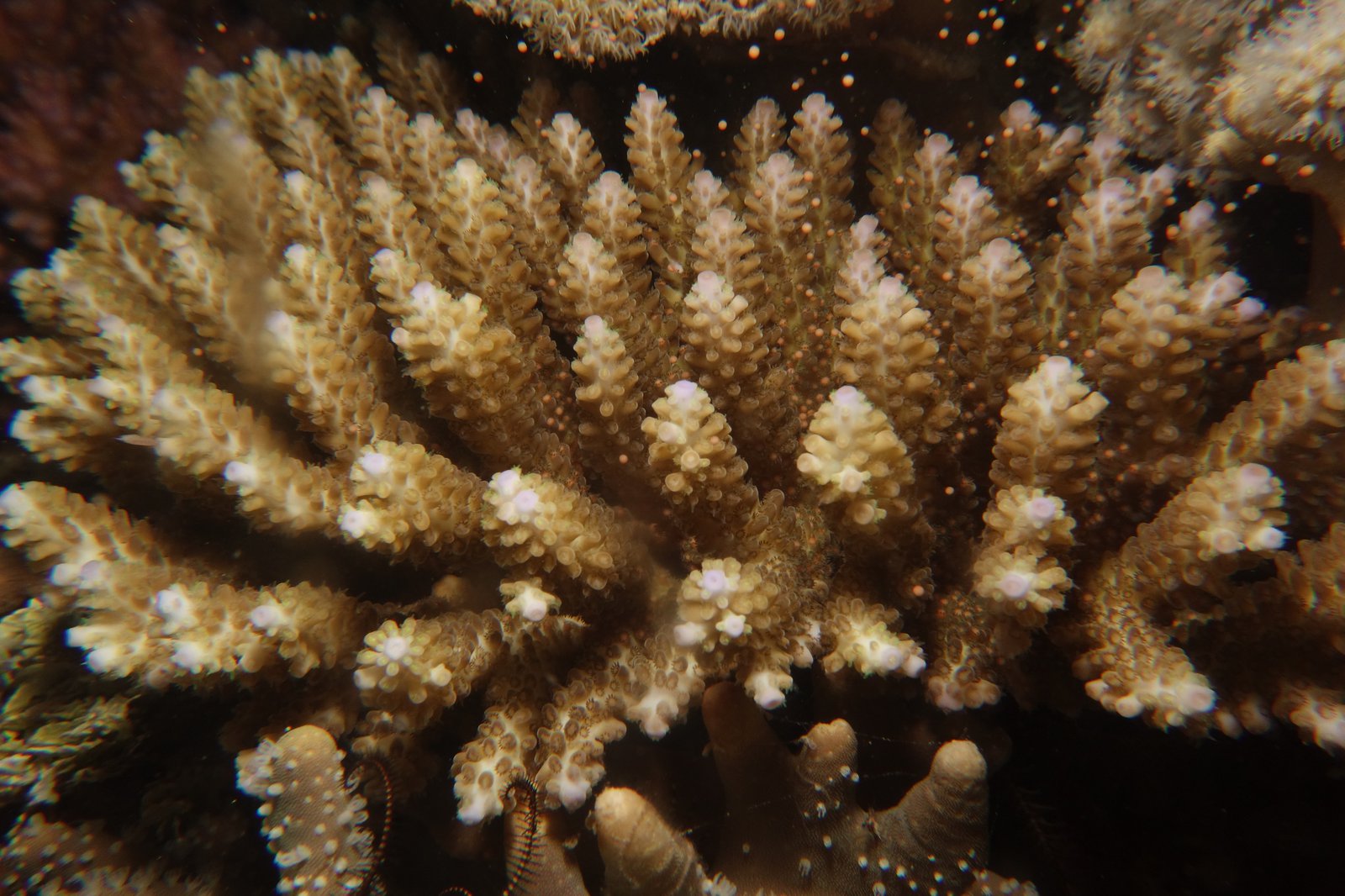Deck the halls, the corals are spawning!

The reef, with resident fish, at Lizard Island Research Station.
Image: -© Australian Museum
In the north part of the Great Barrier Reef, about 250 km from Cairns, lies the splendid Lizard Island. Although only a small island of less than 10 km2 the area is home to extensive fringing reefs, as well as a 10 m deep lagoon. Unfortunately, the reef surrounding the island is no stranger to environmental disasters. Within an 11-month period, in early 2014 and 2015, the reef experienced extensive damage from two large cyclones. The degree of harm to the reef was exceptional, with the damage sustained being unmatched in living memory. On the fringing reef corals were shattered, with large boulders sent hurtling down slope. In some areas all that remained of the reef was bare rock. Fortunately, lagoonal reefs appeared partly protected with coral communities enduring in some parts.

Damage caused to Lizard Island coral reef due to bleaching.
Image: Lyle Vail© Australian Museum

A researcher photographs bleached coral at Lizard Island.
Image: Lyle Vail© Australian Museum
Just at the time the reef should have been recovering in early 2016, a bleaching event occurred. This two-year bleaching event was unprecedented, due to both the extreme temperature as well as its duration. To researchers’ dismay, by the end of 2017, much of the coral was sick, dead or dying. Coral spawning was all but non-existent for that year and coral recruitment (whereby coral larvae settle and become resident adults) was down to 1%. The appearance of the reef had changed markedly, with remaining corals dominated by larger Porites corals and the occasional encrusting coral. Remnant colonies remained in some areas, for example in the lagoon entrance, and surprisingly, many tiny young corals survived.

A close up of Acropora coral spawning at Lizard Island Research Station.
© Australian Museum
The end of 2018 brought much welcomed good news. On the fourth night following the full moon, it happened- the water began bursting with eggs dancing in the water column. Although not back to normal levels, the corals were finally spawning. Even the tiny micro corals that had managed to survive had grown large enough to spawn, and the reef experienced a rise in recruitment. This year some corals began to spawn in November 2019, with researchers joyous at witnessing the final spawning event of the year on the 17th December.

Underwater photograph of the resilient reef at Lizard Island Research Station.
Image: Australian Museum© Australian Museum
A scene of utter devastation a few years earlier, this resilient reef is now on the way to recovery. Having experienced two good consecutive summers, the corals have been growing rapidly. However, we must not lower our guard regarding the impacts of climate change. If the reef continues to experience extreme bleaching events and cyclones perhaps it will not be capable of bouncing back quite as quickly next time. In the meantime, one can only hope the reef continues its journey to a full and celebrated recovery.
Emma Flannery (Science Communicator AMRI)









